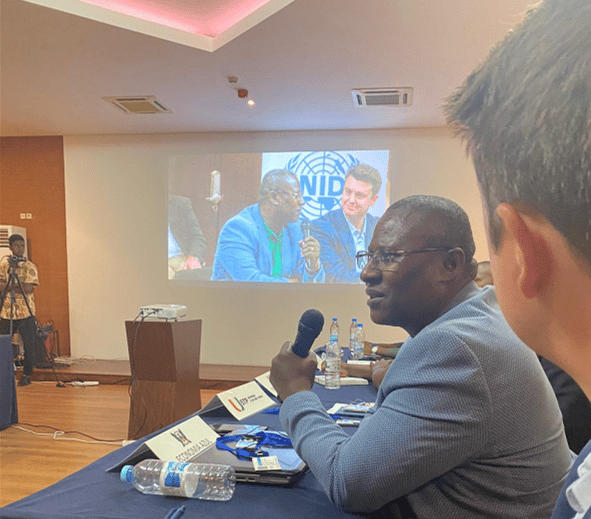
There are several reasons why OTEC hasn’t yet been rolled out commercially. Historically, the efficiency of the cycles and components proved difficult for early projects to make a commercial case. Throughout decades of very cheap oil, gas and coal, it was thought that OTEC projects needed to be 50MW or even 100MW scale to be competitive. However, recent changes in the global economics of energy and advancements in the efficiency of components have solved these challenges.
The early commercial OTEC systems require innovative funding models to succeed: an area in which Global OTEC’s team and partnerships have a strong track record. You could say this decade we have the ‘perfect storm’ to begin the commercialisation of this technology.
Studies from OTEC demonstration facilities to date show evidence of no effects on marine life, but there is a consensus across researchers that this must be continuously monitored on the first commercial plants.
Concerns around an OTEC plant’s water discharge pipe can be modelled and designed in advance of a deployment to ensure cooler water is released back into depth where it will sink until it reaches the same temperature. This mitigates the risk of phytoplankton build-up causing algae blooms around the surface.
Literature reviews of previous OTEC plant designs report a wide range of LCOEs. Partly this is due to scale, with small R&D facilities having high unit costs, and large-scale plants producing power as cheap as $0.05 per kWh.
Our procurement studies and engagement with suppliers show a range between $0.30 and $0.15 per kWh is realistic for early generations of OTEC barges.
Concerns around the technical challenges of OTEC’s riser pipes have been thoroughly considered. We undertook a detailed design phase for the cold water pipe in collaboration with suppliers and scientists on the cutting-edge of subsea riser pipe designs.
While engagements are ongoing. Global OTEC is opting to deploy its first commercial systems in a market where much smaller distances between warm surface seawater and cold deep water are present.
It has been estimated that tropical ocean waters absorb solar radiation equivalent in heat content to that of about 250 billion barrels of oil each day. A University of Hawai‘i study found that as many as 15,000 plants, spaced 30 kilometres apart and within 100 kilometres of land, would avoid any large-scale disruptions. These plants would generate more than 2 terawatts of electricity. This would make OTEC a viable way, with other renewables, to help power the world.
Onshore OTEC research facilities have played an important role in the development of components but the configuration of onshore OTEC at scale is rarely cost-efficient. To provide the significant amount of cold water required, onshore OTEC plants require several multi-kilometre pipes fixed to the seabed to facilitate the acquisition and safe discharge of water.
As the water pipes represent one of the largest cost centres of an OTEC plant, onshore OTEC severely limits the regions where the process can be economical. It centralises electricity production into a single on-land location which is ineffective for off-grid areas. It also presents a risk that a single point of failure in the event of a natural disaster which could delay recovery efforts due to compromised facilities unable to produce electricity.
Beyond the production of clean power, the OTEC process also provides several useful by-products. The delivery of cool water to the surface has been used in air-conditioning systems and in chilled-soil agriculture (which allows for the cultivation of temperate-zone plants in tropical environments). Open-cycle and hybrid processes have been used in seawater desalination, and OTEC infrastructure allows access to trace elements present in deep-ocean seawater, like lithium. In addition, green hydrogen and green ammonia can be extracted from water through electrolysis for use in fuel cells.
Global OTEC’s designs prioritise circular materials which can be recycled such as steel for the platform and HDPE for the riser pipes. OTEC plants do not require rare earth minerals like neodymium used in wind turbines. An assessment of OTEC showed lower lifecycle emissions than solar, tidal and wave.
The lifetime of an appropriately maintained OTEC barge is projected to be 30 years, though some Oil and Gas installations have been designed to live longer than this.